The Intel Broadwell Desktop Review: Core i7-5775C and Core i5-5675C Tested (Part 1)
by Ian Cutress on June 2, 2015 7:45 AM ESTProfessional Performance: Linux
Built around several freely available benchmarks for Linux, Linux-Bench is a project spearheaded by Patrick at ServeTheHome to streamline about a dozen of these tests in a single neat package run via a set of three commands using an Ubuntu 11.04 LiveCD. These tests include fluid dynamics used by NASA, ray-tracing, OpenSSL, molecular modeling, and a scalable data structure server for web deployments. We run Linux-Bench and have chosen to report a select few of the tests that rely on CPU and DRAM speed.
Due to our limited testing time and other issues, only the i7-5775C was processed in our Linux tests. These should be updated for Part 2.
C-Ray: link
C-Ray is a simple ray-tracing program that focuses almost exclusively on processor performance rather than DRAM access. The test in Linux-Bench renders a heavy complex scene offering a large scalable scenario.
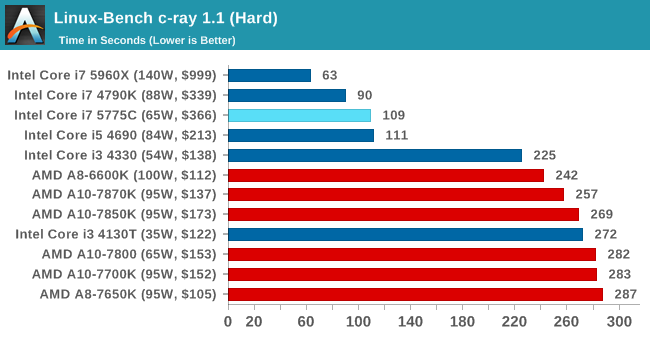
NAMD, Scalable Molecular Dynamics: link
Developed by the Theoretical and Computational Biophysics Group at the University of Illinois at Urbana-Champaign, NAMD is a set of parallel molecular dynamics codes for extreme parallelization up to and beyond 200,000 cores. The reference paper detailing NAMD has over 4000 citations, and our testing runs a small simulation where the calculation steps per unit time is the output vector.
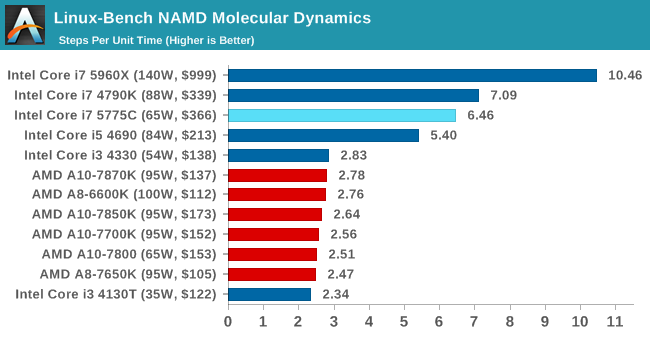
NPB, Fluid Dynamics: link
Aside from LINPACK, there are many other ways to benchmark supercomputers in terms of how effective they are for various types of mathematical processes. The NAS Parallel Benchmarks (NPB) are a set of small programs originally designed for NASA to test their supercomputers in terms of fluid dynamics simulations, useful for airflow reactions and design.
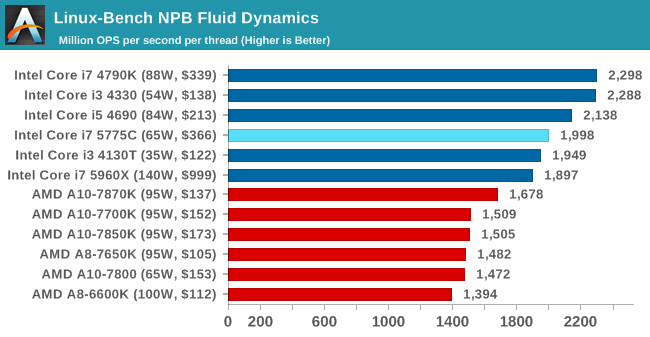
Redis: link
Many of the online applications rely on key-value caches and data structure servers to operate. Redis is an open-source, scalable web technology with a b developer base, but also relies heavily on memory bandwidth as well as CPU performance.
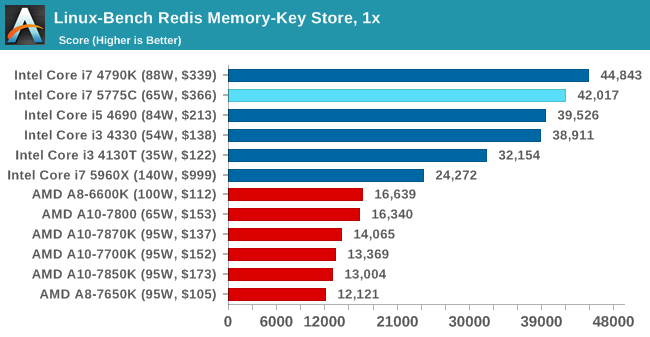
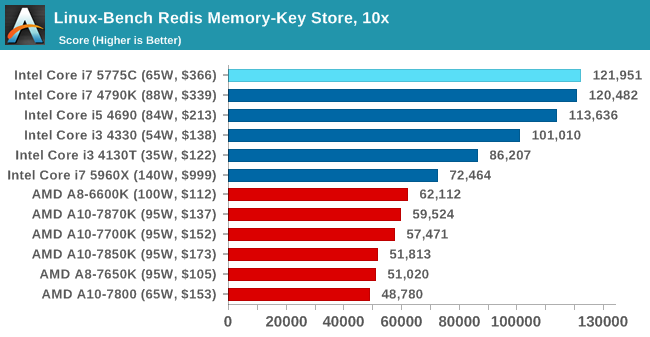
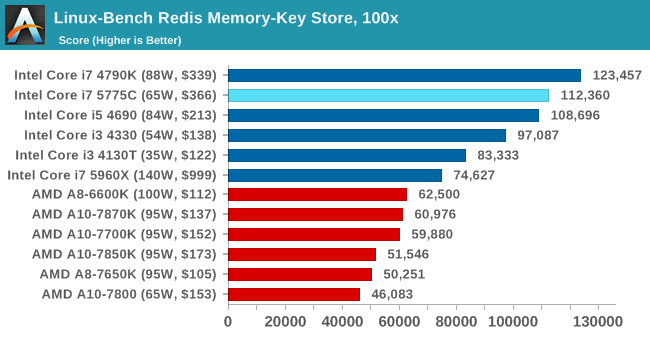










196 Comments
View All Comments
MrSpadge - Tuesday, June 2, 2015 - link
Simply use something representative of the current situation. Not old numbers which may be totally meaningless today. In Europe we have simple price comparison engines like geizhals.eu where it's really easy to find typical prices. Just exclude obvious outliers and cheap products not yet deliverable and voila, you've got the current street price.nathanddrews - Tuesday, June 2, 2015 - link
In Europe? You mean on the Internet? LOLThere are tons of price comparison websites, but why should AT take the time and be responsible for tracking down pricing when we can all do that in our own areas or from our favorite retailers? They don't know where I like to shop or what currency I use, so it seems like a waste of their time. I'd much rather get quality performance analyses on a more regular basis than have them worry about updating price indexes. Who knows? Maybe their new parent company can do that for them off to the side or something?
MrSpadge - Wednesday, June 3, 2015 - link
I never see people from the US referring to them. They seem to just use Newegg or Amazon. And getting prices for European shops won't do AT any good, as they're mainly writing for the US.And AT has to look up the launch prices of the hardware anyway when they write a review. How much more time would it take to instead look up the current price in a comparison engine? Again, I'm not talking about updating prices dynamically.
I they're not doing this you always get comments like "who in their right mind would buy x? Vendor y must be totally stupid to keep offering this". Simply because the launch price is far higher than the current price.
Senpuu - Wednesday, June 3, 2015 - link
Why should AT take the time, you asked? Well, why should they list a price at all then? Hell, why provide any information to the reader beyond specs and performance metrics? Why even talk about the market at all? There is obviously value to be had in doing so and it comes down to where you draw the line. Whereas you would rather they not 'waste their time', I would rather not waste mine by having to question whether a product is being valued near current market price or some esoteric launch price, and then being forced to google multiple things myself to get a feel for 'real world' prices. No, the price they come to will likely not tell me the exact total of the item in question at whatever preferred retailer a reader happens to use, but it will probably be within 5-10% of that value, which is highly useful for at-a-glance comparisons and understanding where something sits in a market segment.We're not talking about a large amount of effort here, but I'd rather AT do it than myself; it's less effort for them and it benefits a large portion of their readers. Simply provide a disclaimer about the methods used to gather the data as well as a liability warning, and everyone's happy.
Thud2 - Saturday, June 13, 2015 - link
Very good point.yannigr2 - Wednesday, June 3, 2015 - link
There are official price cuts and so you have new OFFICIAL pricing that it is fair to put in the charts. If the launch price of 7850K was $500 and the last official price was $100, wouldn't be the above charts completely misleading? People do have a price/performance ratio in their minds when looking at these charts. In fact for 90% that's the biggest parameter when looking at those charts. And those charts LIE exactly there.manifestation88method - Sunday, September 27, 2020 - link
Nice post https://discoversoulpath.com/yannigr2 - Wednesday, June 3, 2015 - link
You can always take the last OFFICIAL price, but nevermind. It's AMD's pricing that it is wrong anyway. Who cares about poor poor AMD?Gothmoth - Tuesday, June 2, 2015 - link
intel is sitting on it´s laurels because there is no competition.AMD is no competition for poweruser.
users want broadwell..mhm.. aha....
i am the only one who wants intel to make a fast 6 (or better 8) core system without integrated graphics, that runs not to hot and does not cost a fortune?
can´t we have such a CPU for 500-600 euro?
ok then i stick to my OC ivy bridge for a few more years.. and you intel can complain about declining sales.
MrSpadge - Tuesday, June 2, 2015 - link
That's exactly what i7-5820K is for. If it consumes too much power for your taste - well, that's simply the price you have to pay for more cores.